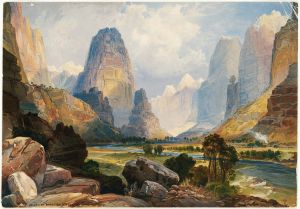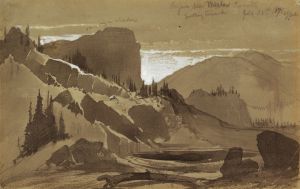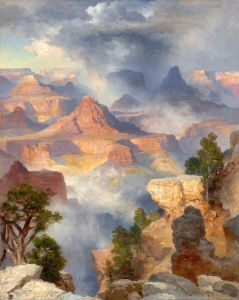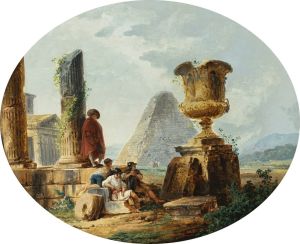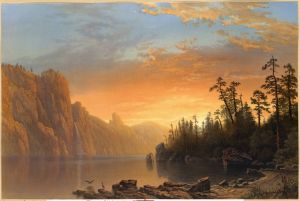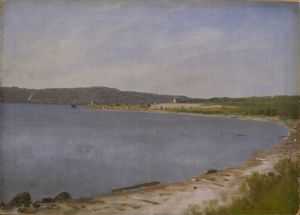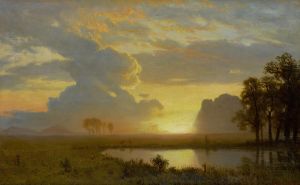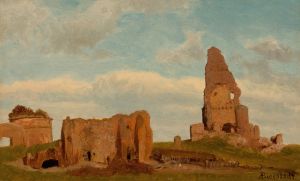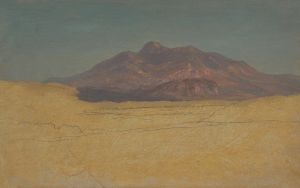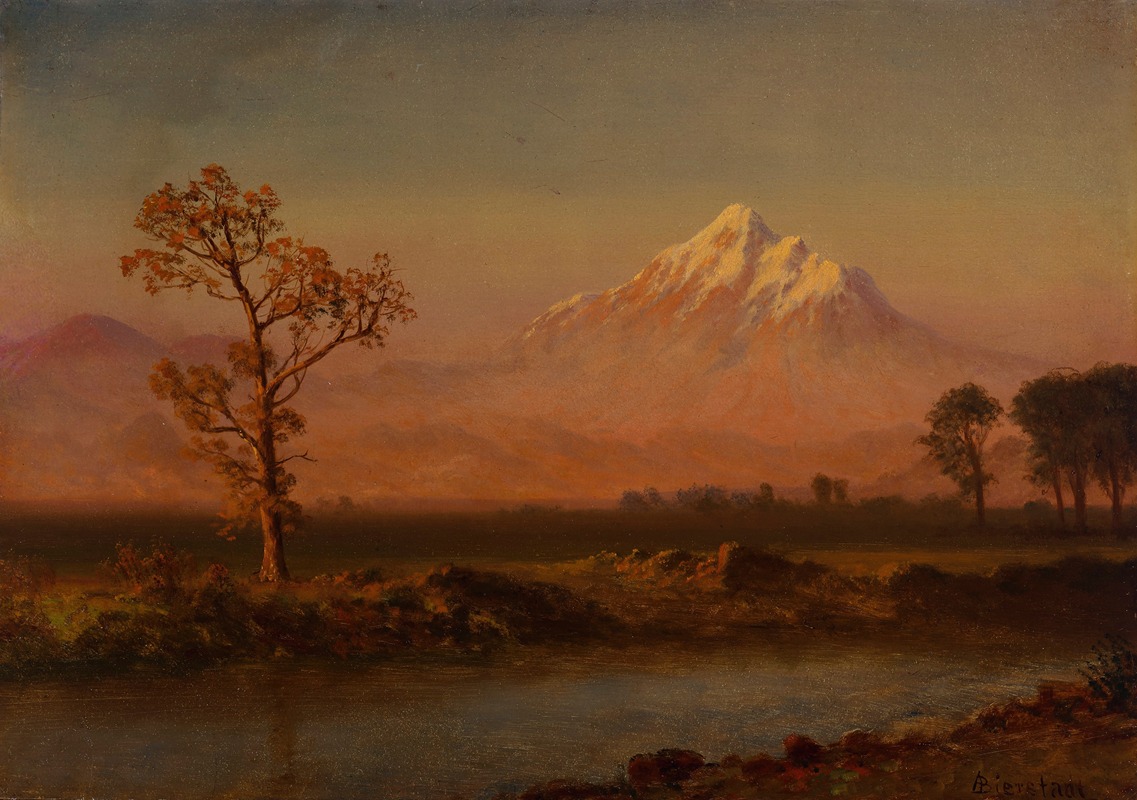
Mount Hood
A hand-painted replica of Albert Bierstadt’s masterpiece Mount Hood, meticulously crafted by professional artists to capture the true essence of the original. Each piece is created with museum-quality canvas and rare mineral pigments, carefully painted by experienced artists with delicate brushstrokes and rich, layered colors to perfectly recreate the texture of the original artwork. Unlike machine-printed reproductions, this hand-painted version brings the painting to life, infused with the artist’s emotions and skill in every stroke. Whether for personal collection or home decoration, it instantly elevates the artistic atmosphere of any space.
Albert Bierstadt was a renowned 19th-century American painter known for his grandiose landscapes of the American West. His painting "Mount Hood" is one of the many works that exemplify his skill in capturing the majesty and beauty of the natural world. Bierstadt was part of the Hudson River School, a group of artists who were inspired by the romanticism of the American landscape, and he is often associated with the Rocky Mountain School, which focused on the western United States.
"Mount Hood" is a depiction of the iconic peak located in Oregon, which is the highest mountain in the state and a prominent feature of the Cascade Range. Bierstadt's work is characterized by its dramatic use of light and shadow, meticulous attention to detail, and a sense of awe-inspiring scale, all of which are evident in this painting. His ability to render the atmospheric effects and the interplay of light on the landscape is a hallmark of his style.
Bierstadt's journey to the American West began in the 1850s, and he made several trips to the region over the course of his career. These expeditions provided him with the firsthand experience and sketches that he would later use to create his large-scale studio paintings. Although the exact date of "Mount Hood" is not specified, it is consistent with the period when Bierstadt was actively exploring and painting the western landscapes.
The painting captures Mount Hood's snow-capped peak, rising majestically above the surrounding landscape. Bierstadt's use of light creates a luminous effect, highlighting the mountain's grandeur and the serene beauty of the natural environment. The foreground often includes lush vegetation and bodies of water, which add depth and contrast to the composition. This approach not only emphasizes the scale of the mountain but also invites viewers to appreciate the intricate details of the scene.
Bierstadt's work was well-received during his lifetime, and he became one of the most celebrated landscape painters of his era. His paintings were exhibited widely and often fetched high prices, reflecting the public's fascination with the American West and its untamed beauty. "Mount Hood" is a testament to Bierstadt's ability to convey the sublime qualities of nature, a theme that resonated with the 19th-century audience's sense of exploration and discovery.
Today, Bierstadt's paintings, including "Mount Hood," are held in various public and private collections, where they continue to be admired for their artistic merit and historical significance. His work remains an important part of American art history, offering a window into the 19th-century perception of the western frontier and its landscapes. Through his paintings, Bierstadt has left a lasting legacy that continues to inspire appreciation for the natural beauty of the American West.





